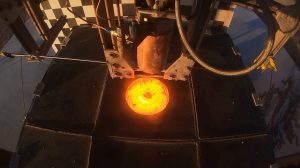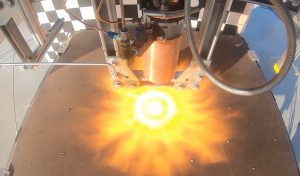

NASA’s Large Vehicle Landing Surface Interaction project team is working to develop a landing pad concept for the Moon that could one day be constructed directly on the lunar surface. Researchers from NASA’s Kennedy Space Center in Florida who are working on improving plume surface interaction models traveled to the Mojave Desert in California to conduct materials testing with Masten Space Systems late last year. Using hot gas from a rocket engine, they conducted a series of hot fire tests on samples of various materials similar to those found on the surface of the Moon. These tests examined the suitability of the materials that could be used in the construction of landing pads on the lunar surface for large landers—materials like sintered basalt rock pavers, carbon fiber blankets, and carbon fiber blankets filled with a lunar regolith simulant. Data from the hot fire testing will be used to design landing pad concepts for future NASA and commercial human lunar missions.

In addition to hot fire test data, the team is developing models to better understand how a lander can affect the lunar surface. This data will allow NASA to identify safe locations for large landers and help enable the agency’s Artemis missions. NASA’s Large Vehicle Landing Surface Interaction project is a public-private partnership with SpaceX under the 2019 Announcement of Collaboration Opportunity.
